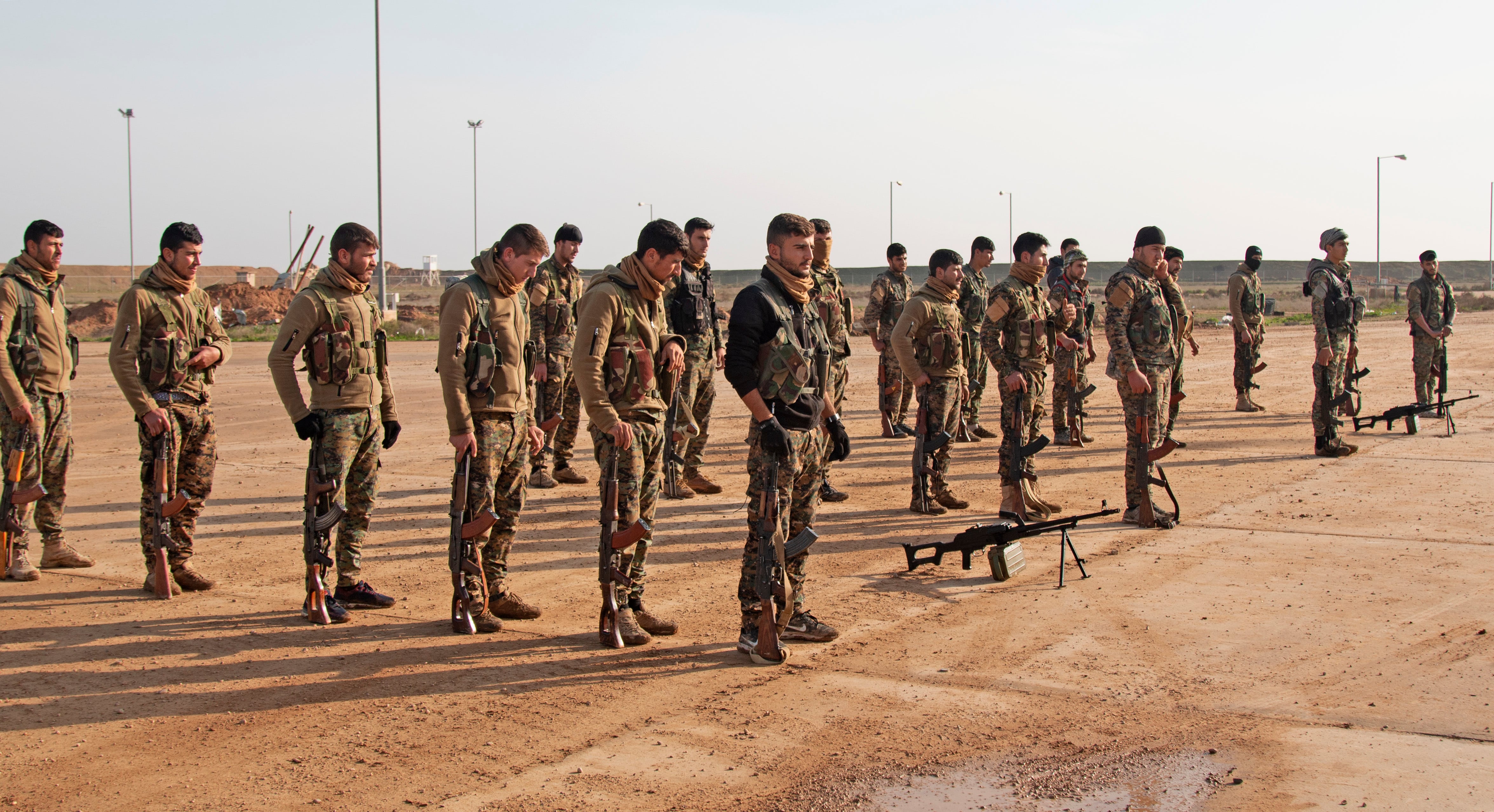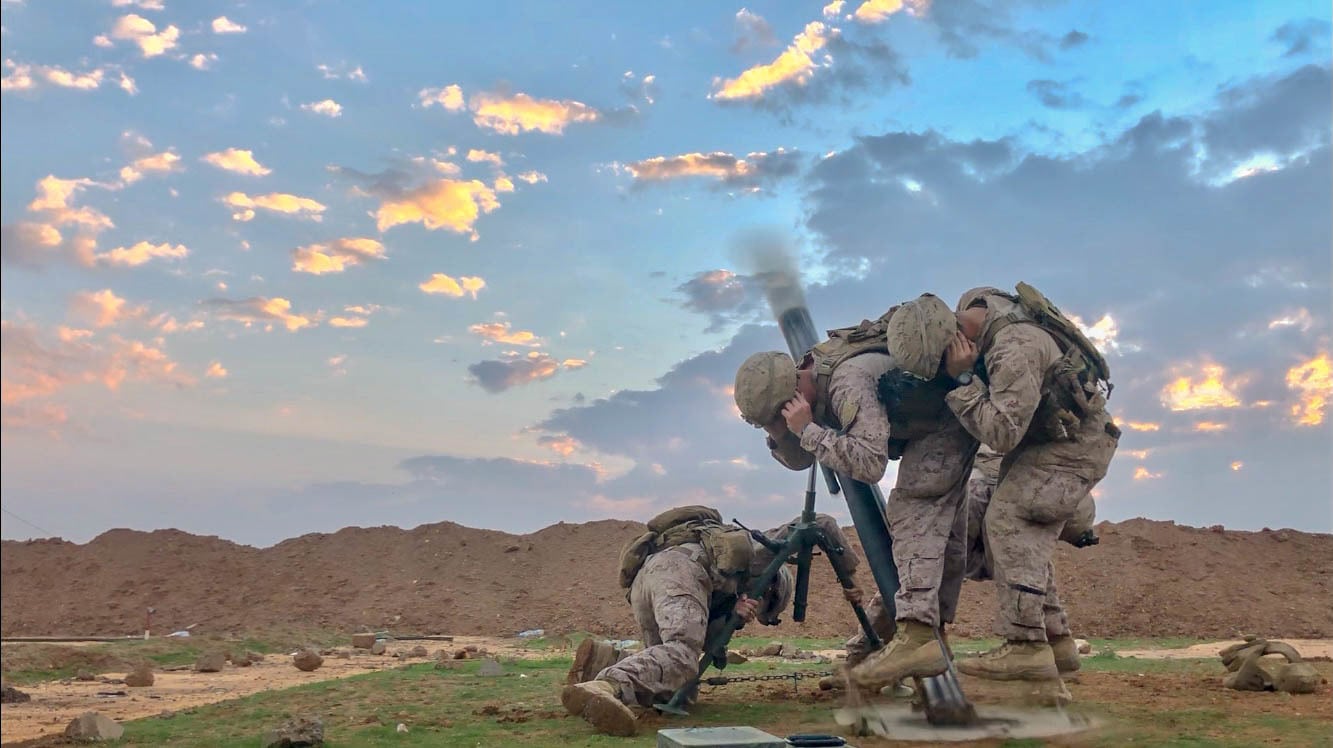The noose is tightening on the final group of Islamic State fighters along Syria’s Middle Euphrates River Valley, as U.S. troops prepare for their own departure once the terror group’s physical holdings are finally eliminated, Pentagon officials said.
ISIS' last stretch of territory has been crunched into a tiny area measuring roughly six square kilometers, according to Mustafa Bali, a spokesman for the U.S.-backed Syrian Democratic Forces, or SDF.
While the SDF have conducted most of the fighting against ISIS, their forces are backed by U.S. troops, to include artillery teams, special operations advisers, reconnaissance drones and fighter aircraft.
Those Americans, however, are in the “early stages” of withdrawal, Acting Secretary of Defense Patrick Shanahan told reporters Tuesday.
“We are on a deliberate, coordinated, disciplined withdrawal,” Shanahan said. “99.5 percent plus of the ISIS-controlled territory has been returned to the Syrians. ... Within a couple of weeks it will be 100 percent.”
Shanahan said that ISIS no longer has the freedom of movement necessary to mass its troops, and their financial capabilities have been significantly diminished.
“The risk of terrorism and mass migration has been significantly mitigated," Shanahan said.
Last week, an ISIS car bomb attempted an attack on a U.S. and local partner force convoy in northeastern Syria. The car was detonated before it could reach the allies and caused no friendly casualties, according to SDF and American officials.
RELATED

The attack occurred during a “routine field mission," the SDF said in a statement, adding that ISIS has been “intensifying its attacks" as the group’s territory dissolves across Syria.
The week before the car bomb incident, on Jan. 16, a group of American military personnel and U.S. Defense Department civilians were attacked by a suicide bomber during a meeting in a restaurant in Manbij, northern Syria.
Some have pointed to the attacks as evidence of ISIS' shift to a terror organization, rather than a regular fighting force that holds ground and defends it.
The final ISIS pocket “uses thousands of civilians as human shields in order to stop the progress of SDF,” Bali, the SDF spokesman, said over social media. “They send messages via smugglers demanding an agreement which will let them flee the area in return for releasing civilians.”
Bali said the remaining ISIS fighters have been asking SDF commanders to provide them with safe passage to Turkey or Idlib, Syria, where an al-Qaeda branch known as Hayat Tahrir al-Sham holds territory.
“All their demands were rejected by the Syrian Democratic Forces," Bali said. "[The] operation will go on until the last terrorist is dead.”

A United Nations Security Council report this summer said that ISIS has between 20,000 and 30,000 loyal members distributed between Syria and Iraq, including thousands of foreign terrorist fighters.
However, it remains unclear how active those ISIS members are in the group’s terror network, as well as whether the U.S. should remain in the country to conduct a counter insurgency mission.
Shanahan told reporters that the Pentagon is looking at ways to sustain a local security apparatus in Syria, despite the U.S. withdrawal.
“That’s where the support of the local coalition, these partnerships, are so critical,” he said.
The U.S. has been engaging with local partners, to include Syrian Arabs and Kurds, regarding the next role they will play in the country.
“The discussions hold real promise," Shanahan said. "I want to underscore the real part. Obviously, lots of contentious issues. The people who are working them, I have high confidence in.”
Still at question is how and when eastern Syria will be reunited with the western part of the country, where the Bashar al-Assad regime has consolidated its hold alongside Russian backing.
Kyle Rempfer was an editor and reporter who has covered combat operations, criminal cases, foreign military assistance and training accidents. Before entering journalism, Kyle served in U.S. Air Force Special Tactics and deployed in 2014 to Paktika Province, Afghanistan, and Baghdad, Iraq.





